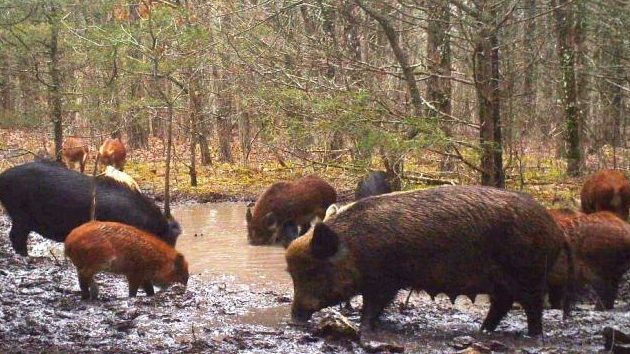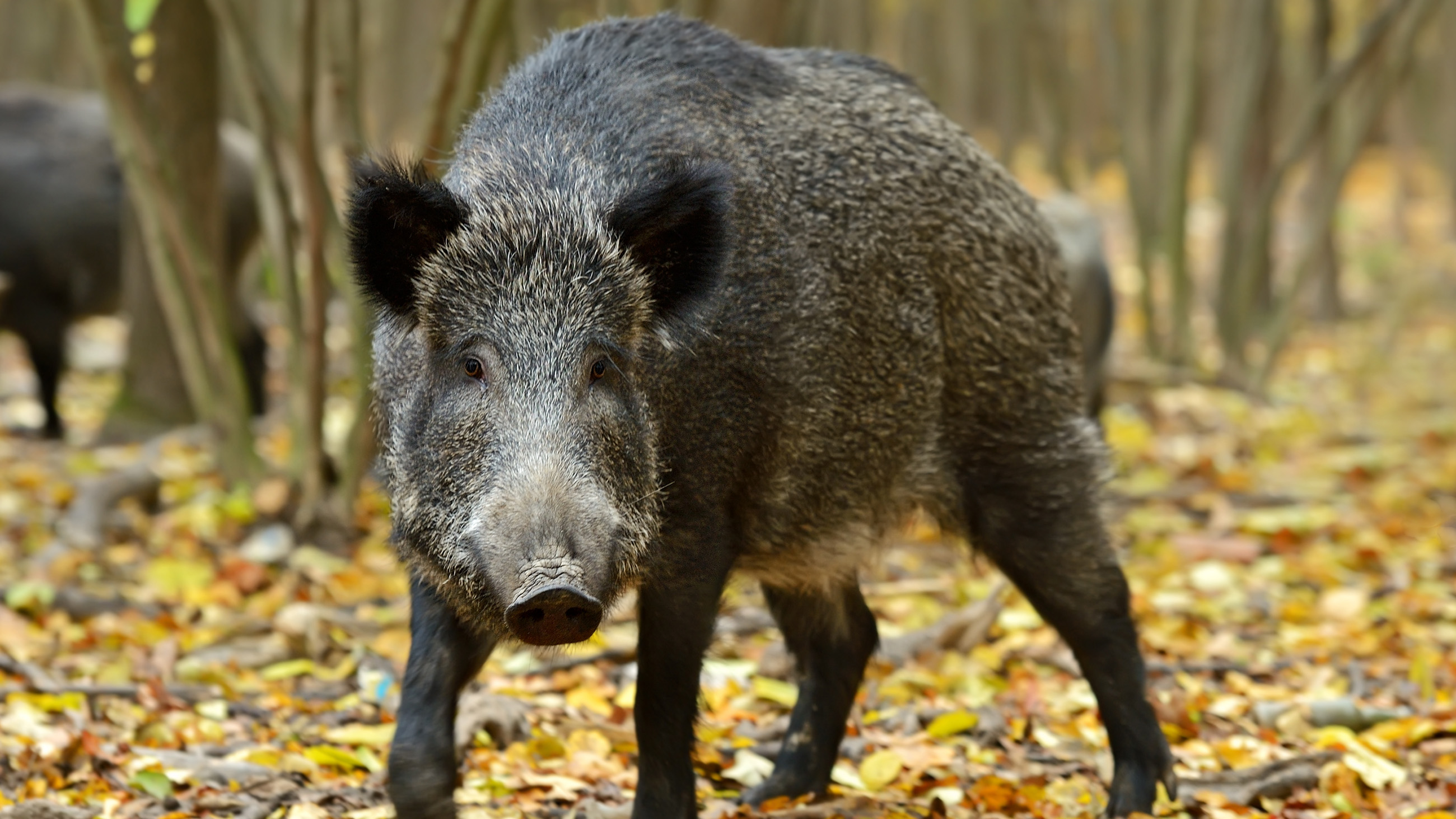Missouri Struggles With Feral Hogs — And Hog Hunters
The cobra effect is a well known term in behavioral economics, referring to an anecdote from British colonial rule in India. The story says that a British governor, wanting to eliminate the cobra population in Dehli, declared a bounty for each dead snake. To his horror, illegal cobra breeders began popping up all over the city — raising the snakes, then killing them and collecting the money. Realizing his mistake, the governor ended the bounty in order to stop the breeders, which caused them to release their now worthless animals into the city, exponentially increasing Delhi’s cobra problem.

Wild hogs cost the U.S. $1.5 billion in damage and control measures every year. Now Missouri, like other states, is trying to stop their spread with a seemingly counter-intuitive strategy. (Visual by MDC Staff)
The effect been cited in other unwanted policy outcomes, for instance, an early 20th century program in Vietnam to reduce the rat population in Hanoi by paying a bounty for each tail. Eventually, the city’s governor realized that hunters were simply removing the tails and sending the rats back into their homes so that they could breed further — and continue fostering an abundance of tails.
And now there’s the rather fascinating example of feral pig population management in the state of Missouri.
Pigs were first introduced to the U.S. as a source of food in the 1500s. Over the centuries, animals inevitably escaped and bred with wild boars introduced for sport hunting, gradually establishing a thriving feral swine population. For a long time there was relatively peaceful coexistence but during the past few decades, feral pigs have become a growing problem, not only in Missouri, but in much of the United States.
According to the USDA Animal and Plant Health Inspection Service, they’ve been reported in at least 35 states and cause an estimated $1.5 billion in damage every year. The hungry hogs have been known to dig up entire fields of crops overnight. They’re also known to spread diseases like trichinosis and pseudorabies to other animals and, occasionally, to humans.
“They are kind of like a gang,” said Joe Jerek, a spokesperson for the Missouri Department of Conservation. “You just know that they are destroying the area.”
While a variety of approaches have been taken to control the animals, the MDC last week approved what may seem at first to be a counterintuitive strategy — banning hog hunting on public land.
But that’s where the cobra effect comes in.
Previously Missouri moved to control the hogs through unrestricted hunting, encouraging people to shoot them on both private and state conservation lands and permitting the animals to be killed all year round.
But hunting didn’t put a dent in the population, says Jerek. In fact, it made it worse.
People came to love hog hunting so much that they would illegally release newly bred or imported animals so the population grew. In order to keep numbers down, the state decided to employ large-scale traps to lure in groups of hogs and kill them all at once.
But to do that, the MDC needs to keep hunters away from the traps. Earlier efforts to do large-scale trapping in addition to public hunting, were frustrated by the fact that hunters were using the traps to their advantage. The practice was to bait the traps and leave them for days or weeks to allow the hogs to get comfortable around them. But often a hunter would hear about the trap and the concentration of hogs and go out to shoot one or two. The rest of the pigs would then scatter — ruining the department’s effort.
Hence the ban, which goes into effect September 30th, on hunting on public lands. Not surprisingly, some of the state’s hunters are not happy about the move. The comments on social media range from “Very very bad decision by the conservation department. Every state that has hogs allows people to hunt them why Missouri doesn’t want that is ridiculously stupid” to “The only way to get rid of these pests are to kill them. Banning will only help their population grow. I didn’t realize that hog farms had lobbyists working in the MDC.”
But Jurek points out that Missouri still permits feral pig hunting on private land; the area covered by the ban accounts for only about one percent of state land area. And in reality, hunting is even more strictly regulated in a number of other states. Minnesota, Nebraska, New York, and Nevada, for example, prohibiting all feral pig hunting and other states, such as Indiana, allow it only on private land with express permission of the land owner.
The new policy in Missouri, in other words, is less about aggressive prohibition and more about a cobra-effect counter-experiment: will keeping hunters away from hog-traps help effectively reduce the population? And that is a question that both the conservation department and the state’s hunters will be watching very closely.
Ian Evans, Undark’s editorial intern, worked on a University of Missouri research project in 2014-15 that monitored a Missouri Department of Conservation program to reintroduce elk into the Ozarks.










